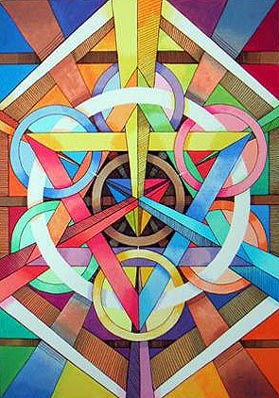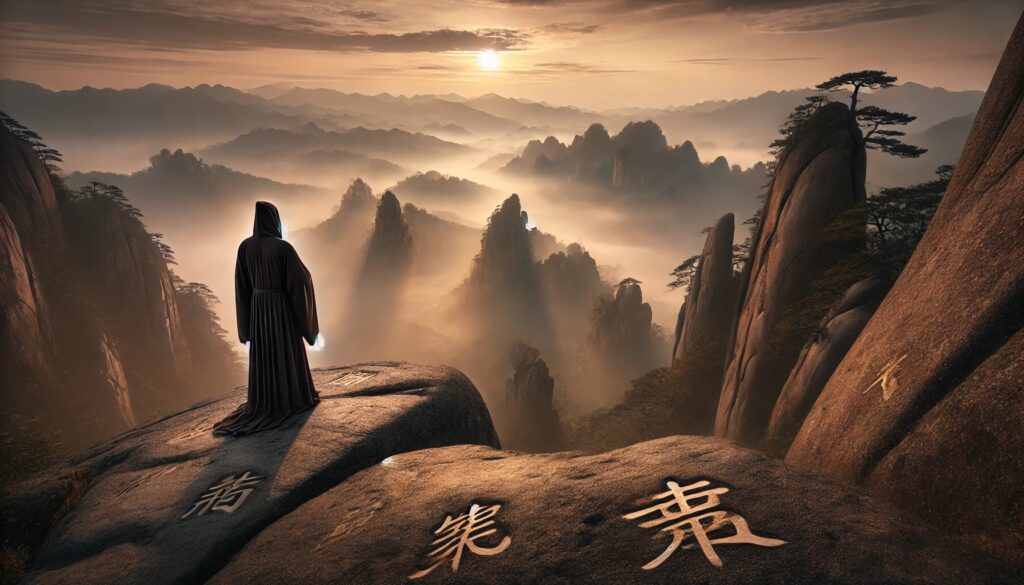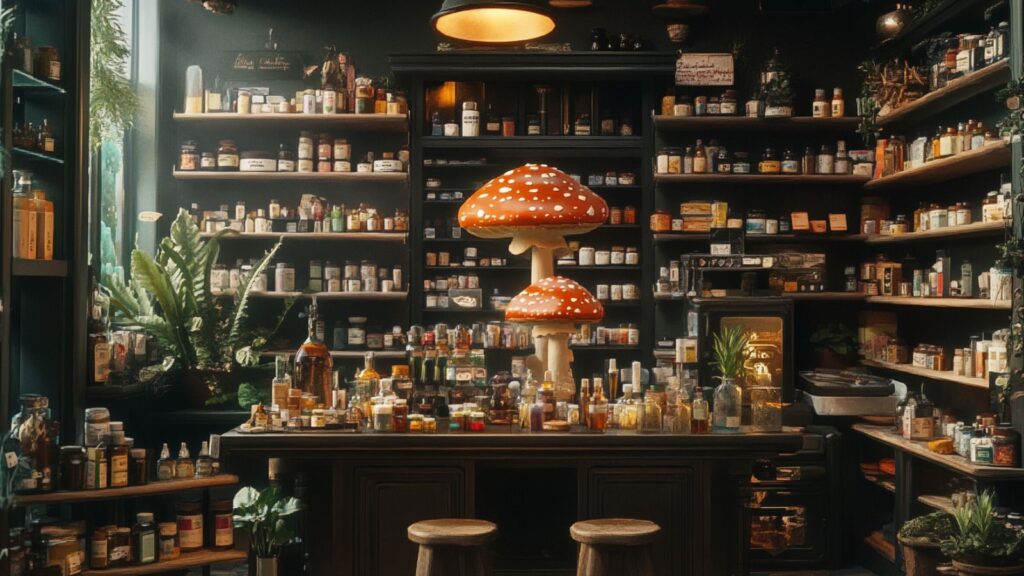In 1954, Aldous Huxley published “The Doors of Perception,” a famous essay observing that the effects of mescaline were remarkably similar to the unitive mysticism of the world’s great religions, particularly Vedanta, the philosophical-mystical form of Hinduism which Huxley practiced. It caused an immediate sensation. Many in the public were outraged by its pro-pharmacological spirit, and many in the academy accused Huxley (like William James before him) of flattening different mystical traditions, and of disregarding distinctions between “sacred and profane” mystical practice.
But many more were inspired. Huxley’s essay, and other works like it, set the agenda for 1960s spirituality, and what later came to be called the New Age movement. He provided a philosophical explanation of what was important about mescaline – that our perceptive faculties filter out more than they let in, and that mescaline, like meditation, opens those doors wider – and a personal account of what a “trip” was like. He showed how entheogens (as they later came to be called) could be a part of a sincere spiritual practice. And he perhaps unwittingly imported a certain Vedanta agenda of what the “ultimate” mystical experience was like: union. As has been argued by many scholars over the last few decades, this claim of ultimacy – that unio mystica is the peak form of mystical experience, with others defined by how close they approach it – is actually a rather partisan one. Why is “union with the All” superior to, or more true than, deity mysticism, visions of Krishna/Christ/spirits, and the text-based mysticism of the Kabbalah? Sure, for Vedanta it is – but that’s just Vedanta’s view.
Two generations of spiritual seekers have been influenced, for better and for worse, by this hierarchy. From the naive hippie to the sophisticated yogi, Jewish Renewalniks to Ken Wilberites, hundreds of thousands of spiritual practitioners have implicitly or explicitly assumed the prioritization of the unitive over all else: the point is that All is One.
Most of these constituencies are also, like Huxley, influenced by the psychedelic experience, primarily that of mushrooms and LSD. While most contemporary spiritual teachers have long since given these substances up, in favor of meditation and other mystical practices which afford the same experiences in a more reliable container (and one greatly enriched by self-examination and introspection), if you ask them, as I have, they’ll admit that the psychedelic experience formed an important part of their spiritual initiation. Whether it’s what got them on the road in the first place, or confirmed their earlier intuitions, psychedelics have set the agenda for a huge percentage of contemporary spiritual teachers, across religious and spiritual denominations, and many of their followers as well.
These two trends that “all is one” is the point, and that it accords with the psychedelic experience – have occasionally led to a distortion of religious and spiritual traditions. In the Kabbalah, for example, unitive mysticism is only a small part of a wide panoply of mystical experiences. Yes, there are texts which speak of annihilation of the self (bittul hayesh) and a unification with God (achdut). But these are, truthfully, in the minority. Many more are visionary texts, describing theophanies of all shapes and sizes; or records of prophecy or angelic communication; or less explicitly unitive accounts of proximity to the Divine. Yet there’s a sense, among teachers of contemporary Kabbalah – and I’m not referring here to the Kabbalah Centre (where Madonna goes), which does not teach Kabbalah proper, but rather a unique and sometimes weird synthesis of Kabbalah, the Human Potential movement, and New Religious Movements like Scientology – that unitive mysticism is the summum bonum, the ultimate good.
Some Kabbalistic texts agree, but many others do not. For example, Rabbi Arthur Green, today one of progressive Judaism’s leading teachers, in 1968 wrote an article (under a pseudonym) called “Psychedelics and Kabbalah,” explicitly analogizing the psychedelic experiences to aspects of Kabbalistic teaching – but selecting those aspects of Kabbalah and Hasidism which fit the experience. Naturally, Green was also influenced by the many forms of non-Jewish mysticism popular at the time, most of whom asserted that “All is One,” but in that essay, he makes clear that the psychedelic experience affected how he understood Kabbalah. Green, like fellow practitioner-academics Daniel Matt, has been enormously influential: their anthologies of Hasidic and Kabbalistic texts are read far more widely than the texts themselves, and are widely assumed to represent the mainstream of their respective traditions.
I am not taking a position on whether this “distortion” is for good or ill; in my own practice, the nondual/unitive perspective plays a central role, and I am grateful for it, whatever its sources. But I have a hunch that it is about to change.
The reason it is changing is that more and more Jewish spiritual seekers are pursuing non-unitive paths. This includes earth-based ritual, shamanic ritual, and other disciplines which, while they may hold the view that “all is one,” provide experiences of differentiation (energies, elements, visions, etc). But perhaps more importantly, it includes drinking ayahuasca, smoking DMT, and visionary shamanic-entheogenic practices which offer different experiences from the unitive one. The ayahuasca trip, unlike the mescaline one, is not especially unitive: indeed, one of its hallmarks is the sense of communication with other life forms or consciousnesses. And while a sense of “all is One” is sometimes reported in the midst of the ayahuasca experience, it’s more common to read reports of visions of phenomena – manifestation, not essence.
Some of these accounts are strikingly similar to texts from the Hechalot and Merkavah schools of Jewish mysticism, which flourished between the second and ninth centuries. In the texts from this period, we read detailed accounts of heavenly palaces, Divine chariots, and angels; of ascents to other realms which seem somehow to be in outer space or an extraterrestrial locale; of a sense of great danger, but also great awe, beauty and love; and of beings which travel on some kind of cosmic vehicle. The descriptions are visionary and auditory, much like the accounts of ayahuasca visions. They are “shamanic” journeys, both in the sense of being journeys of the soul to other realm and in the sense of a transformation of the self. They yield information, prophecy, revelation, theophany. And they are not really about “all is one.”
Hechalot and Merkavah mysticism is studied in the academy, but it is little known in the contemporary spiritual world. It’s complicated, arcane, and literally other-worldly. But just as the unitive moments of Hasidism appeal to those who have had a unitive experience on mushrooms, so too the visionary aspects of Hechalot and Merkavah mysticism appeal to those who have had a visionary experience on ayahuasca. The similarities are striking.
What’s more, Hechalot and Merkavah mysticism, related as it is to gnosticism, provides one of world literature’s richest libraries of other-worldly mystical experience. It’s eerie how similar some of these millennia-old texts are to the records contemporary journeyers provide of the ayahuasca trip: the sense of being in “outer space,” the tenuous links to consensual reality, the sense of danger, and above all the colorful descriptions of chambers, angels, songs, palaces, ascents, descents, fire, music, and so much more. It also provides a sense of history, context, and “belonging” to those who affiliate with Judaism, Christianity, or gnosticism; like unitive experiences, non-unitive visionary/ ecstatic experiences have a lineage within these traditions. Perhaps, too, it might offer guidance for those seeking to integrate such experiences into their lives.
To reiterate, I am taking no position on whether unitive or non-unitive experiences are “better,” and see nondual essence and dualistic manifestation as two sides of the same ineffable unity. My point, simply, is that much of contemporary Western spirituality derives from a particular psychedelic experience and a particular form of mysticism it approximates. With the increasing popularity of ayahuasca and similar medicines, the former element has changed – and I think the latter will too.
In the esoteric world, this kind of change and interchange has always been with us. Hechalot mystics learned from the gnostics, who learned from the Jews, who learned from the Babylonians. Medieval Kabbalists learned from the Sufis, who learned from the Hindus, who learned from the Buddhists, who learned from other Hindus. One need not make the facile, and false, claim that all mysticism is the same thing in order to recognize that mystics across space and time have understood themselves to be gesturing toward the same truths, albeit in very different ways. And those differences advance, not obstruct, the progress of realization. After all, when one can ultimately know nothing, it helps to learn from everything.
Image by Akiva, used courtesy of a Creative Commons license.













